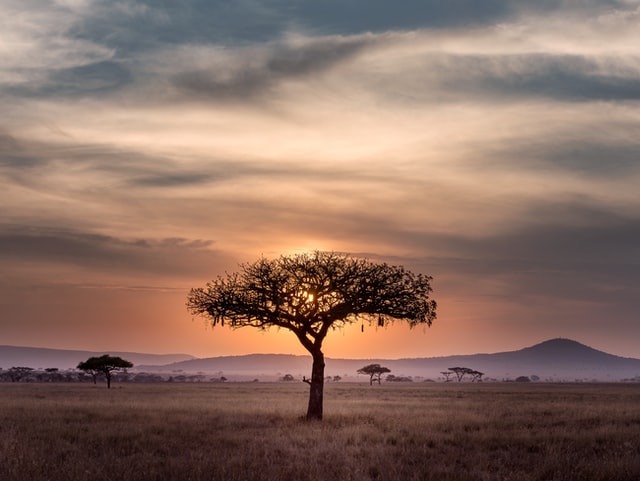COVID-19 pandemic and subsequent lockdown and economic crisis are the biggest challenges the world is facing since World War-II. But there has been a few positives also in the pandemic times. Increase in financial inclusion and digital payments is one of them. In Africa, many financially excluded people have opened mobile money account during pandemic to receive financial-aid from the government and NGOs. An increasing number of people are shunning cash and using mobile wallets to make hygienic contactless payments at merchants or pay bills and make money transfers from the safety of their homes during lockdown. Consequently, the growth in mobile money transactions post April 2020 has been phenomenal in many African countries as reported by their central banks or telecom regulators. But has this growth been gender agnostic and equal amongst male and females?
Despite an impressive increase in financial inclusion in the last decade, the gender gap in account ownership has not changed. According to World Bank Findex data, in Sub-Saharan Africa, the gender gap in account ownership widened from 9% in 2014 to 12% in 2017. In this article, we will look at data and trends from some African countries to explore if COVID induced growth in financial inclusion and mobile money transactions has helped in decreasing the financial access gender gap in the region.
Rwanda
In Rwanda, lockdown was imposed on March 22, 2020. Three days prior to it on March 19, mobile money P2P transfers were made free to boost contactless digital payments during the pandemic. Cenfri and Finmark Trust analyzed the impact of fee waive off and lockdown on the mobile money subscribers and P2P transfers. The resulting growth in transactions was phenomenal. Between the week starting on March 8 (week prior to lockdown) and week starting on April 19, the mobile money P2P transfer value grew by a massive 452%, from RWF 7.3 billion to RWF 40.3 billion (Exhibit 1) and the number of unique P2P senders increased by 271% from 0.49 million to 1.82 million (Exhibit 2).
The most pleasant surprise was sharp growth in female P2P senders. While most P2P senders were male, the female P2P senders grew more quickly. Between the week of March 8 and April 19, female P2P senders grew by 343% (from 149,000 to 654,000), while male P2P senders grew by 243%. Consequently, within just 6 weeks, proportion of female P2P senders out of total P2P senders grew from 30% to 36% (Exhibit 2).

Exhibit 1

Exhibit 2 (Source: Cenfri and Finmark Trust)
Malawi
On instructions from Reserve Bank of Malawi, the two mobile money providers in Malawi- Airtel Money and TNM Mpamba, removed P2P Money Transfer fees on April 21, 2020 for a period of three months. Consequently, the P2P transfers grew exponentially from April 2020 till they peaked in July 2020. The P2P transfer value has increased by 51% in just three months, from MWK 13.6 billion in April 2020 to MWK 27.7 billion in July 2020. Thereafter, with return of service fees, there was a decline in P2P transfers, before again increasing in December 2020 to MWK 26.9 due to the festive season.
Coincidently, during the first half of 2020 the female registered mobile money users increased swiftly by 26%, from 2.22 million to 2.79 million, compared to an 11% growth in male registered mobile money users. The proportion of female mobile money users amongst total mobile money users grew from 35.8% to 38.7%. In the second half of 2020, when the service fees were reinstated, the female mobile money user numbers were mostly stagnant and the proportion of female mobile money users has decreased (Exhibit 3).

Exhibit 3 (Source: Reserve bank of Malawi)
Senegal
During GSMA Thrive Africa Mobile Money Forum 2020, Ramatoulaye Adama, CEO Orange Finances Mobiles, Senegal shared that simplification of KYC rules in Senegal helped Orange Money to register over 350,000 new users during the COVID-19. A vast number of new users transacted – made or received a money transfer or payment. Hence, activity rate of users who joined the Orange money service during COVID-19 was high. Interestingly, gender parity amongst new Orange Money users was also high. New users, which registered for Orange Money during the pandemic had almost equal number of men and women, which is a very positive development in closing the financial access gender gap in Senegal.
Observations and Conclusion
The above data from Rwanda and Malawi shows that waiving of service fee attracted many new female users to mobile money. Earlier research has shown that females are more likely than males to be price sensitive and high transaction service fees can be a barrier to adoption of mobile money amongst females. Hence, mobile money providers need to experiment with the pricing and service fee to make mobile money an attractive alternative to cash for females.
The trend from Senegal points towards the need for more flexible KYC regime. Regulators have to adopt a tiered KYC approach that balances ease of opening mobile money account with the risk involved. For example, a KYC regime, where female groups like tribal women, rural women and refugees, with no or less documents can also open mobile money account, but with lower transaction limits and fewer services, can help in widening female financial inclusion. Swift and convenient self-registration for mobile wallet can also attract more females to try the mobile money service. The wallet offered in this case can be available for a limited period or can have lower transaction limits, which can be upgraded to a permanent wallet with higher transaction limits by doing a full KYC at a mobile money agent.
The sudden changes made in mobile money services during the COVID-19 pandemic, surely, have given us some learnings to ponder over!






